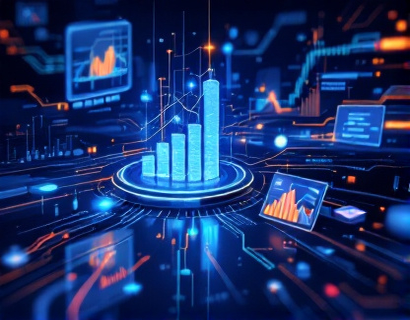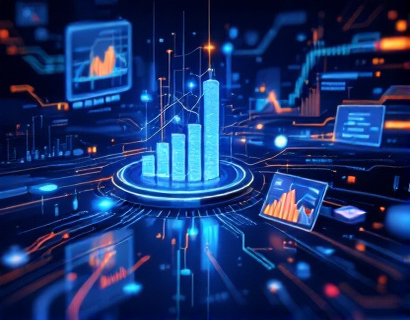Unlock Data-Driven Growth with Cutting-Edge Business Intelligence Dashboards
In today's fast-paced business environment, the ability to make informed decisions quickly and accurately is paramount. Advanced business intelligence dashboards play a crucial role in transforming complex data into actionable insights, streamlining decision-making processes, and enhancing operational efficiency. These powerful tools are essential for driving strategic growth and maintaining a competitive edge in the market.
Business intelligence (BI) dashboards are designed to provide real-time visibility into key performance indicators (KPIs) and other critical metrics. By consolidating data from various sources into a single, intuitive interface, these dashboards enable users to monitor business operations, identify trends, and make data-driven decisions with unprecedented speed and accuracy.
Key Benefits of Business Intelligence Dashboards
The benefits of implementing advanced BI dashboards are numerous and far-reaching. Firstly, they significantly improve decision-making by providing immediate access to relevant data. Managers and executives can quickly assess the current state of the business and forecast future trends, allowing for proactive rather than reactive strategies.
Secondly, BI dashboards enhance operational efficiency. By automating data collection and analysis, these tools reduce the time and resources required for manual reporting and analysis. This not only saves time but also minimizes the risk of human error, ensuring that the data used for decision-making is accurate and reliable.
Thirdly, BI dashboards foster a data-driven culture within organizations. When data is easily accessible and understandable, employees at all levels are empowered to make informed decisions. This democratization of data leads to more collaborative and effective problem-solving, driving continuous improvement and innovation.
Components of a Cutting-Edge BI Dashboard
A cutting-edge BI dashboard comprises several key components that work together to deliver comprehensive insights. These include:
- Data Visualization: Advanced charting and graphing tools that transform raw data into visually compelling representations. These visualizations help users quickly grasp complex information and identify patterns and trends.
- Real-Time Data: Access to up-to-the-minute data ensures that decisions are based on the most current information available. This is particularly crucial in dynamic markets where conditions can change rapidly.
- Customizable Views: The ability to tailor dashboards to specific needs and preferences allows users to focus on the metrics that matter most to them. This customization enhances usability and ensures that the dashboard remains a valuable tool over time.
- Predictive Analytics: Advanced algorithms and machine learning techniques that forecast future trends and outcomes. These predictive capabilities enable businesses to anticipate challenges and opportunities, further refining their strategic planning.
- Integration Capabilities: Seamless integration with existing systems and data sources ensures a unified view of the business. This integration reduces data silos and provides a holistic perspective on operations.
Implementing a BI Dashboard: Best Practices
Implementing a BI dashboard requires careful planning and execution to maximize its benefits. Here are some best practices to consider:
First, define clear objectives and key metrics. Before diving into the technical aspects, it's essential to understand what you want to achieve with the dashboard. Identify the KPIs that align with your business goals and ensure that the dashboard is designed to track these metrics effectively.
Second, involve stakeholders in the design process. Gather input from various departments to ensure that the dashboard meets the needs of all users. This collaborative approach helps create a tool that is both comprehensive and user-friendly.
Third, prioritize user experience. The dashboard should be intuitive and easy to navigate. Use clear labels, logical layouts, and interactive elements to make the data accessible to users with varying levels of technical expertise.
Fourth, ensure data quality and integrity. The accuracy and reliability of the dashboard depend on the quality of the underlying data. Implement robust data governance practices to maintain high standards of data quality.
Finally, provide training and support. Users need to understand how to use the dashboard effectively. Offer training sessions and create comprehensive documentation to help users get the most out of the tool.
Case Studies: Successful BI Dashboard Implementations
Several organizations have successfully leveraged BI dashboards to drive growth and improve operations. Here are a few notable examples:
A leading retail company implemented a BI dashboard to monitor sales performance across different regions and product categories. The dashboard provided real-time data and predictive analytics, enabling the company to optimize inventory levels and tailor marketing campaigns. As a result, the company saw a 15% increase in sales and a significant reduction in inventory costs.
In the manufacturing sector, a major automaker used a BI dashboard to track production efficiency and quality control. The dashboard integrated data from various production lines and suppliers, allowing the company to identify bottlenecks and quality issues promptly. This led to a 10% improvement in production efficiency and a reduction in defect rates.
A healthcare provider implemented a BI dashboard to manage patient flow and resource allocation. The dashboard provided insights into patient wait times, staff availability, and resource utilization. This information helped the provider optimize scheduling and staffing, resulting in shorter wait times and higher patient satisfaction scores.
Future Trends in Business Intelligence
The landscape of business intelligence is continually evolving, driven by advancements in technology and changing business needs. Some key trends to watch include:
1. Artificial Intelligence and Machine Learning: AI and ML are becoming increasingly integrated into BI tools, enhancing predictive analytics and automating complex data processing tasks. These technologies enable more accurate forecasts and deeper insights.
2. Cloud-Based Solutions: The shift to cloud computing offers greater flexibility and scalability for BI solutions. Cloud-based dashboards can be accessed from anywhere, making it easier for remote teams to collaborate and make decisions.
3. Natural Language Processing: NLP technologies are being incorporated into BI tools, allowing users to interact with data using natural language queries. This makes BI more accessible to non-technical users and enhances the overall user experience.
4. Internet of Things (IoT): As IoT devices become more prevalent, BI dashboards are adapting to integrate data from these sources. This integration provides real-time insights into physical assets and processes, further enriching the decision-making process.
5. Enhanced Data Security: With the increasing volume of sensitive data being processed, BI tools are focusing on robust security measures. Advanced encryption, access controls, and compliance features are becoming standard to protect data integrity and privacy.
Conclusion
Advanced business intelligence dashboards are indispensable tools for organizations looking to unlock data-driven growth. By transforming complex data into actionable insights, these dashboards streamline decision-making, enhance operational efficiency, and drive strategic success. As technology continues to evolve, the potential for BI to transform businesses will only grow, making it a critical investment for any organization aiming to thrive in the digital age.










































